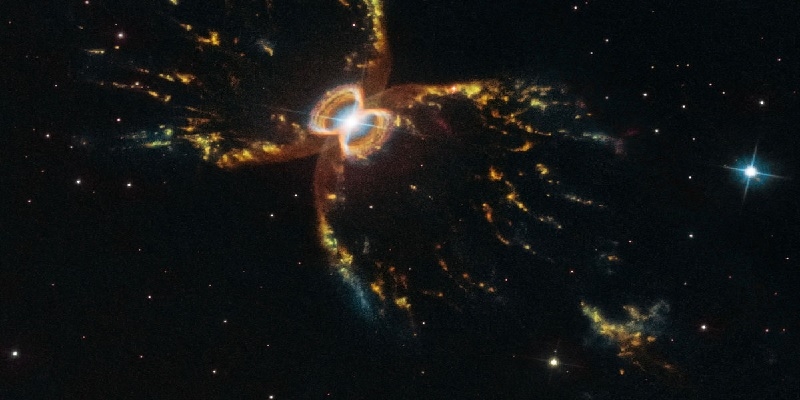Hubble marks 29th anniversary with Southern Crab view
| Date :20-Apr-2019 |

Southern Crab Nebula, which exhibits nested hourglass-shaped structures, has been created by interaction between a pair ofstars at its centre.The unequal pair consists of a red giant and a white dwarf
LONDON, Apr 19 (PTI)
TO celebrate the 29th anniversary of the Hubble Space Telescope’s launch, NASA and European Space Agency (ESA) have released a breathtaking image of the hourglass-shaped Southern Crab Nebula. The nebula, created by a binary star system, is one of the many objects that Hubble has demystified throughout its productive life, ESA said in a statement. This new image adds to our understanding of the nebula and demonstrates the telescope’s continued capabilities, it said.
On April 24 1990, Hubble was launched on the space shuttle Discovery. It has since revolutionised how astronomers and the general public see the universe. The images it provides are spectacular from both a scientific and a purely aesthetic point of view. Each year the telescope dedicates a small portion of its precious observing time to take a special anniversary image, focused on capturing particularly beautiful and meaningful objects.
This peculiar nebula, which exhibits nested hourglass-shaped structures, has been created by the interaction between a pair of stars at its centre. The unequal pair consists of a red giant and a white dwarf. The red giant is shedding its outer layers in the last phase of its life before it too lives out its final years as a white dwarf. Some of the red giant’s ejected material is attracted by the gravity of its companion.
When enough of this cast-off material is pulled onto the white dwarf, it too ejects the material outwards in an eruption, creating the structures we see in the nebula. The object was first written about in 1967, but was assumed to be an ordinary star until 1989, when it was observed using telescopes at the European Southern Observatory’s La Silla Observatory.
The resulting image showed a roughly crab-shaped extended nebula, formed by symmetrical bubbles of gas and dust. These observations only showed the outer hourglass emanating from a bright central region that could not be resolved. It was not until Hubble observed the Southern Crab in 1998 that the entire structure came into view. This image revealed the inner nested structures, suggesting that the phenomenon that created the outer bubbles had occurred twice in the (astronomically) recent past.